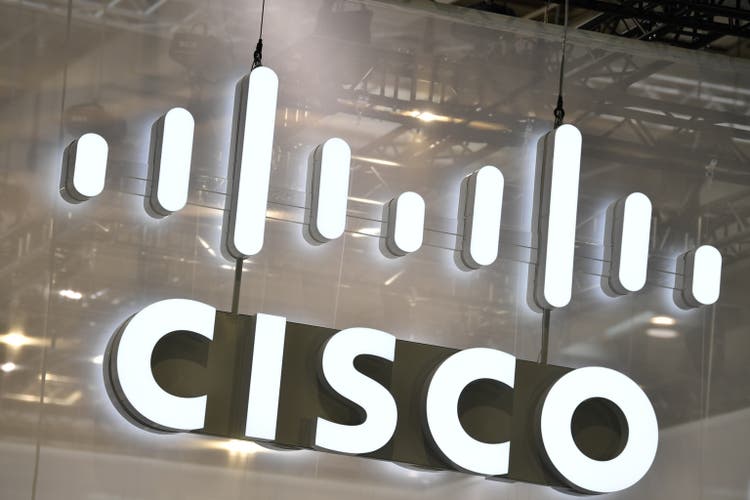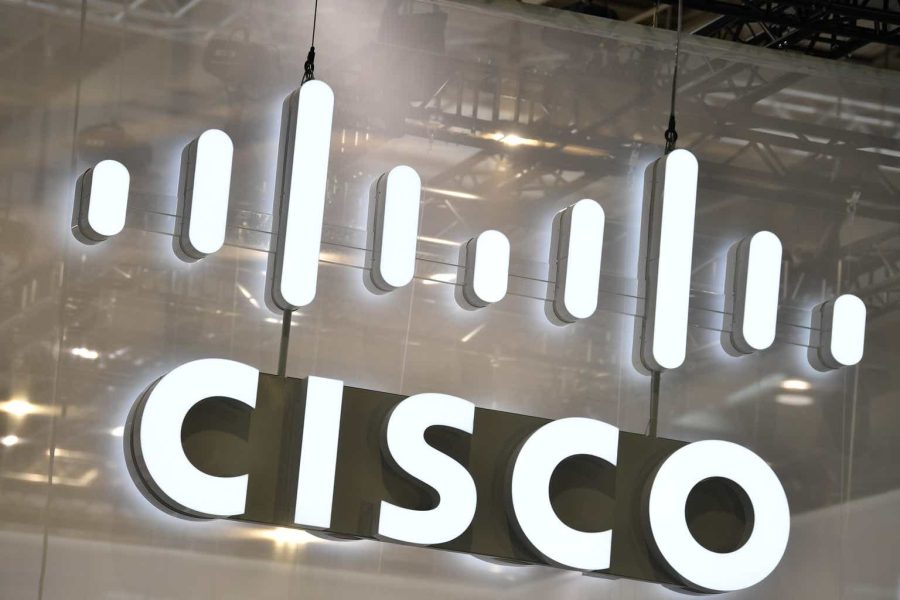Summary:
- Cisco’s FYQ1 earnings report shows an 8% Y/Y increase in revenue, but a significant downturn in product order growth.
- The company attributes the slowdown to implementation issues with larger enterprises, service providers, and cloud customers.
- Cisco is focusing on AI infrastructure development and collaborations with key partners to capitalize on market opportunities.
Alexander Koerner
Cisco’s (NASDAQ:CSCO) FYQ1 earnings release has raised eyebrows as the company navigates a challenging landscape marked by weaker orders and backlog issues. Despite an 8% Y/Y increase in revenue, hitting the upper limit of the company’s previous guidance, the product order growth saw a downturn, slipping 20% Y/Y. This fiscal quarter’s earnings analysis delves into these issues, offering insights into the company’s strategies around backlog normalization, AI infrastructure development, and market opportunities.
Q1 Earnings Analysis
Cisco’s FYQ1 earnings release disappointed as the company revised its earnings guidance due to weak orders and a backlog issue. The company reported a revenue of $14.7 billion, which marked an 8% year-over-year (Y/Y) increase. This figure falls at the high end of Cisco’s previous guidance of 6% to 8% growth and slightly surpasses the consensus assumptions. The execution of backlog orders primarily drove the revenue boost.
However, product order growth experienced a significant downturn, falling 20% Y/Y, compared to a decrease of 14% Y/Y in the previous quarter. The company suggests the decrease is due to more digestion of backlog, with mid-point revenue guidance for the second quarter ranging from -7% to -6%. Both lead times and backlog are seen as normalized, a prediction that deviates from the company’s previous expectations set for the end of the first half of FY24.
As a result, Cisco is reducing its FY24 revenue guidance to -6% to -4% Y/Y from its previous guidance range of +0% to +2%. This is in contrast to the consensus expectation of +1.5%. The company is also reducing its EPS guidance to $3.87-$3.93, down from $4.01-$4.08, which is lower than the consensus expectation of $4.05.
In FYQ1, order declines were observed in several regions and sectors. Orders from the Americas fell by 19%, compared to a 12% decrease in the previous quarter. EMEA orders declined by 13%, maintaining the same rate of decrease as the prior quarter. APJC orders saw a steep decline of 38%, up from a decrease of 23% in the previous quarter. Furthermore, enterprise orders fell by 26%, and service provider & cloud orders declined by 38%. On the other hand, public sector orders saw a slight growth of 2%, compared to an 11% decrease in the previous quarter.
Management attributes the slowdown to issues primarily concentrated among large customers, with the primary issue being implementation rather than macroeconomic factors. Despite the macroeconomic headwinds being difficult, they are viewed as consistent quarter over quarter. The backlog also seemed to normalize faster than anticipated, with the Q2 and FY24 guidance no longer assuming any additional benefit to revenue.
Insights From The Call
Cisco’s earnings call provided many great insights into its business, the macro environment, and AI.
Cisco’s management indicated a slowdown in new orders and a quicker-than-expected normalization of order lead times and backlog. The primary contributors to this deceleration were larger enterprise, service provider, and cloud customers, who have taken more time to onboard and deploy the high volume of product deliveries received. Cisco has categorized this as an inventory issue, which has short-term implications for their revenue. However, they believe this is a temporary phase and estimate a backlog of 1 to 2 quarters’ worth of shipped orders that are still awaiting deployment.
Several pieces of evidence support Cisco’s analysis. First, they can track the timeframe from shipment to a product’s connection to the cloud for certain parts of their portfolio. This tracking has shown a 1- to 2-quarter delay compared to historical product activation times. Second, the U.S. Federal and Department of Defense, a major customer, did not face the same issues due to “most favored nation” clauses in their contracts. This condition ensured a steady flow of products even during the supply chain crisis, ensuring their order numbers remained normal.
Further supporting their analysis, Cisco observed a significant increase in demand for their implementation services, which grew almost 20% in Q1 and is forecasted to continue into Q2. This trend indicates that customers are seeking more assistance to deploy the technology. Additionally, Cisco noted a surge in recruitment of technology implementation specialists by their partners, with one partner reportedly hiring 200 such employees in the last 90 days.
Despite the surprising slowdown in new orders, Cisco maintains that it is a consumption issue with their customers rather than a symptom of broader macroeconomic challenges. The difficulties with traditional service providers, characterized by elongated sales cycles and extra approvals, remain, but they did not worsen significantly in the last quarter.
Cisco’s continued focus on the AI space demonstrates a strategic focus on creating robust, efficient, and scalable AI infrastructure. The company is collaborating with key GPU and storage partners to develop solutions that include Ethernet technologies, GPU-enabled infrastructure, and joint-tested, validated reference architectures. A strong commitment to open networking for AI is a hallmark of these efforts.
Market projections by the 650 Group forecast the AI switching market to exceed $10 billion in 2027, and Cisco is positioning itself to capitalize on this opportunity. They are developing a scalable fabric for AI, leveraging the power-saving capabilities of Cisco Silicon One. This technology is crucial for AI clusters, and Cisco is committed to securing a leadership position in this sphere.
Cisco has already received orders exceeding $500 million to support AI networks and AI GPUs within the cloud sector. Furthermore, the company has a forward-looking vision for fiscal year 2025, predicting over $1 billion worth of orders for the broad Ethernet build-out under GPUs.
Cisco’s Ethernet fabric is currently deployed under GPUs in three out of the four major hyperscalers in the United States. Additionally, the company is working closely with AMD (AMD), Intel (INTC) and NVIDIA (NVDA) to create solutions that include Ethernet technologies, GPU-enabled infrastructure, and jointly tested and validated reference architectures.
One recent example of this collaboration is a meeting between Cisco’s executive team and Jensen Huang, CEO of NVIDIA, along with his executives. The goal is to build integrated solutions between Cisco and NVIDIA’s technologies, targeting the enterprise sector. The evolving use cases in the enterprise market present a significant opportunity for Cisco and NVIDIA to leverage their combined technology and go-to-market strengths.
Financial & Valuation
Note: All historical data in this section comes from the company’s 10-K filings, and all consensus numbers come from FactSet.
In this section, we will discussion Cisco’s historical financial performance and expected growth as well as valuation based on these expected growth rates. However, following FYQ1 earnings and poor guidance, we expect consensus estimates for topline and margins to go down over the next week.
CSCO’s financial trends present a mixed bag. A CAGR of 5.0% over the past three fiscal years is mediocre, and sell-side consensus forecasts a deceleration of revenue growth to 1.4% this fiscal year and 2.3% in the following. The slightly contracting EBIT margin from 33.8% to 33.5% over the past three years may raise concerns about cost control, but the consensus is bullish, forecasting EBIT margin to expand to 34.0% this fiscal year and 34.2% in the following.
The company’s share repurchase strategy, which has reduced diluted outstanding common shares by 4.3% over the past three years, is commendable. This strategy has contributed to an EPS CAGR of 6.6% over the past three years, outpacing its revenue growth. The consensus forecast predicts continued EPS growth, although at a slower pace of 4.0% and 4.2% for the next two fiscal years.
CSCO’s free cash flow is on an upward trajectory, expected to reach $16,522 million this fiscal year, a 28.6% FCF margin, compared to $14,707 million, a 29.8% FCF margin four fiscal years ago. Despite a slight dip in FCF margin, the overall increase in free cash flow signals a healthy financial state. The company’s capital expenditure level, averaging 1.8% of revenue, indicates a capital light business model. This, coupled with a strong ROIC of 25.1%, suggests efficient use of capital.
CSCO’s robust balance sheet, denoted by a net cash position of $15,873 million, and a generous dividend yield of 2.9%, significantly above the S&P 500’s yield, makes it an attractive proposition for income-focused investors.
On valuation multiples, CSCO is trading at an EV/Sales premium of 24.8% relative to the S&P 500, but at a significant discount on EV/EBIT, P/E, and FCF multiples, suggesting potential undervaluation. The stock’s current P/E multiple of 13.0 is slightly below its 5-year mean of 13.9, indicating a historically moderate valuation.
Compared to its peers, CSCO’s valuation seems more appealing. With JNPR and ANET trading at forward 12-month P/E multiples of 11.9 and 30.0, respectively, CSCO’s multiple of 13.0 is positioned comfortably between the two, suggesting a balance between growth and value.
Conclusion
Cisco’s Q1 earnings report has painted a complex picture, marked by both encouraging signs and areas of concern. While the company’s revenue saw an 8% Y/Y increase, the significant downturn in product order growth and the subsequent revision of its earnings guidance signal challenges that cannot be overlooked.
The rapid normalization of order lead times and backlog, though faster than anticipated, raises questions about future revenue streams. Furthermore, the slowdown in new orders, attributed to issues with larger enterprise, service provider, and cloud customers, warrants cautious observation in the coming quarters.
Cisco’s strategic focus on AI infrastructure and collaborations with key GPU and storage partners, including AMD, Intel, and NVIDIA, indicate a proactive approach to capitalize on future market opportunities. However, the success of these initiatives in the face of current challenges, and whether they can offset the slowdown in traditional service areas, remains to be seen.
With these factors in mind, while Cisco’s strategic initiatives indicate a forward-thinking approach, a cautious outlook seems prudent given the current challenges. The unfolding scenario calls for a close watch on the company’s performance in the coming quarters.
Analyst’s Disclosure: I/we have a beneficial long position in the shares of AMD, NVDA either through stock ownership, options, or other derivatives. I wrote this article myself, and it expresses my own opinions. I am not receiving compensation for it (other than from Seeking Alpha). I have no business relationship with any company whose stock is mentioned in this article.
Seeking Alpha’s Disclosure: Past performance is no guarantee of future results. No recommendation or advice is being given as to whether any investment is suitable for a particular investor. Any views or opinions expressed above may not reflect those of Seeking Alpha as a whole. Seeking Alpha is not a licensed securities dealer, broker or US investment adviser or investment bank. Our analysts are third party authors that include both professional investors and individual investors who may not be licensed or certified by any institute or regulatory body.
